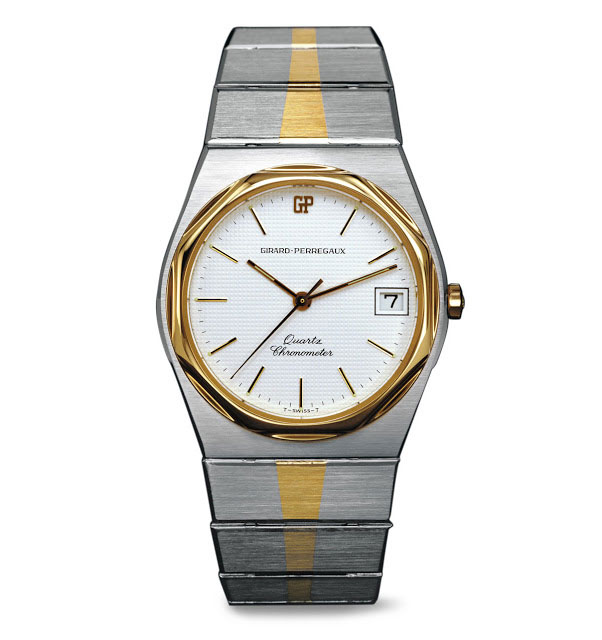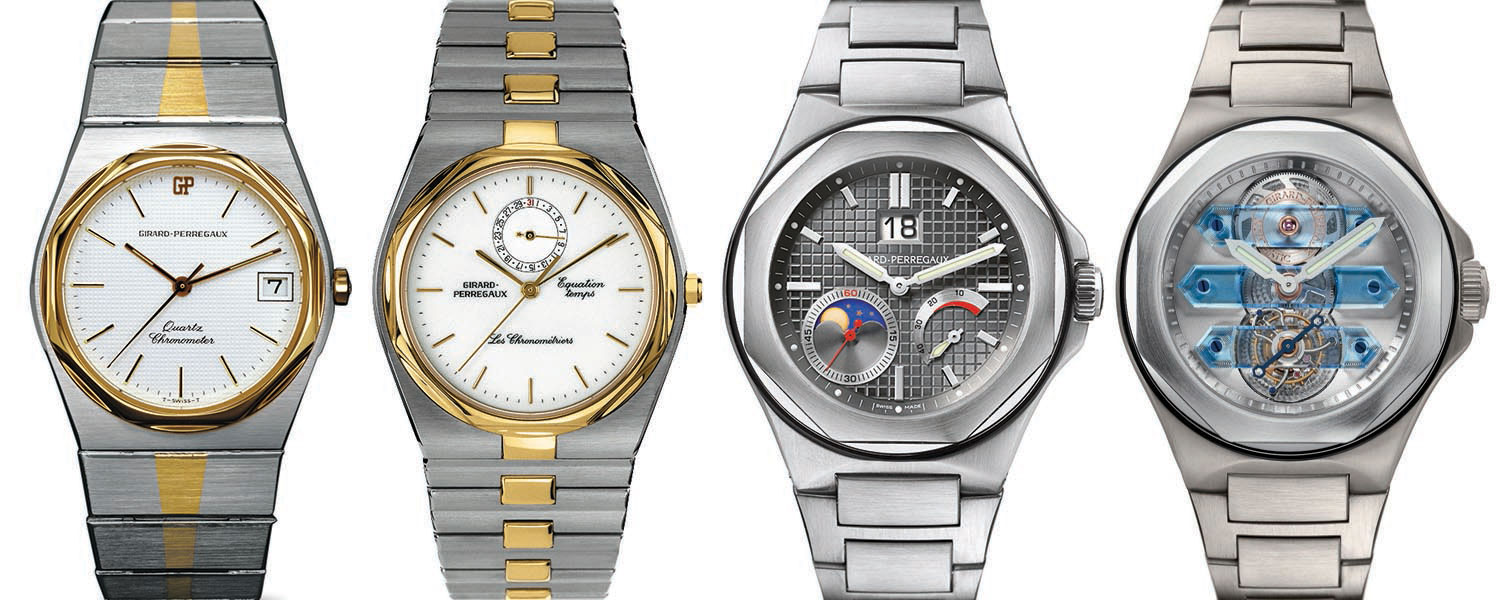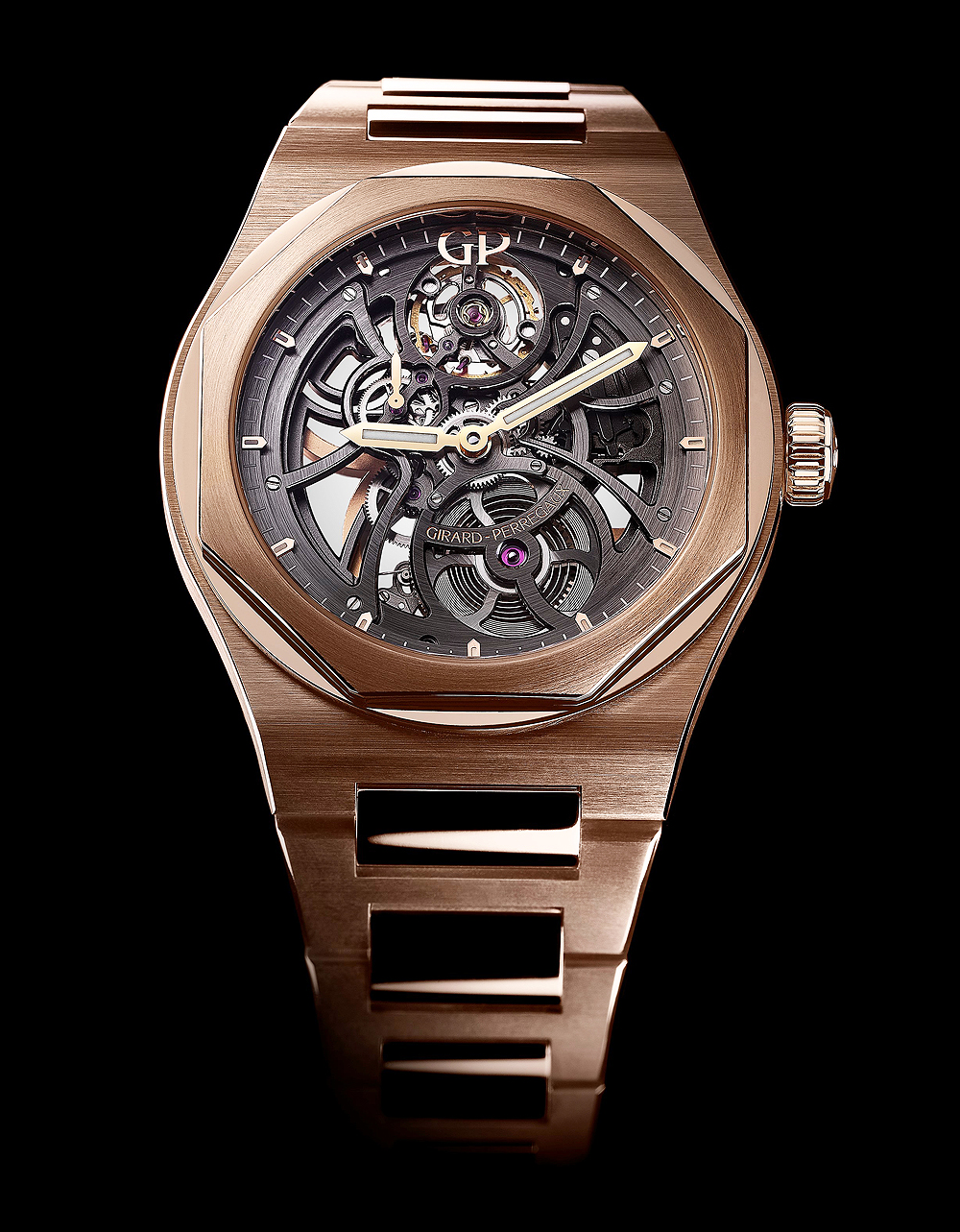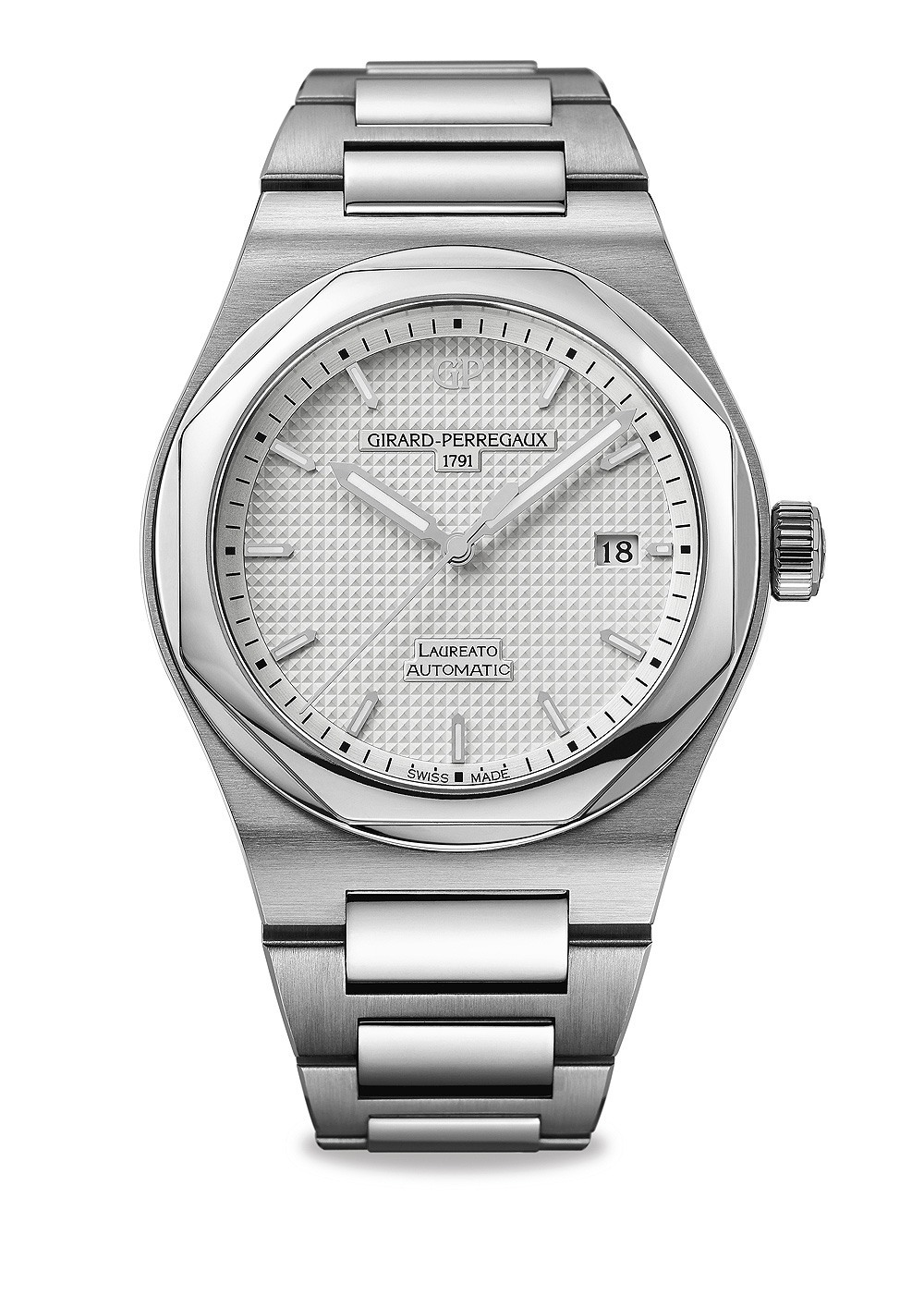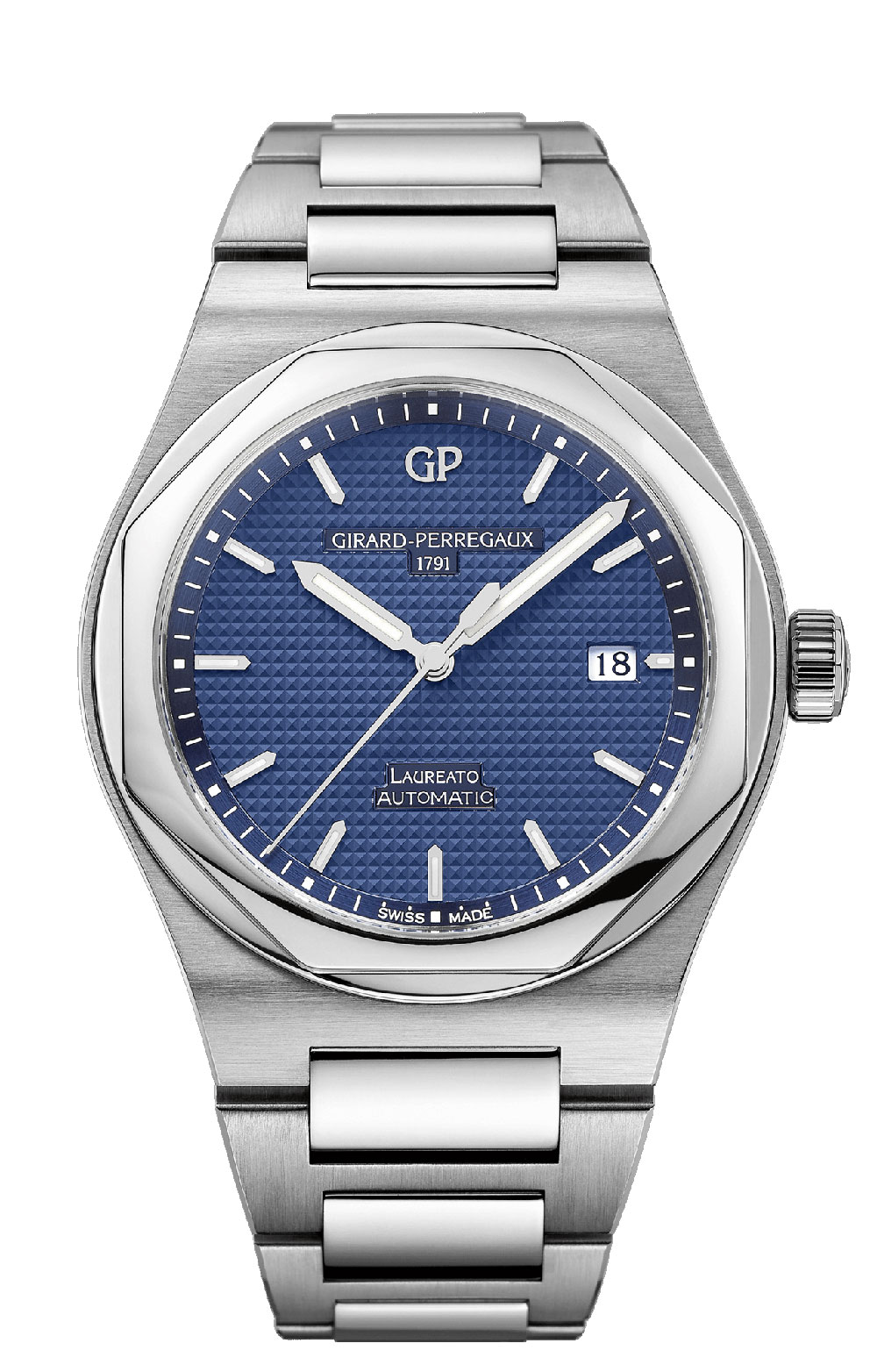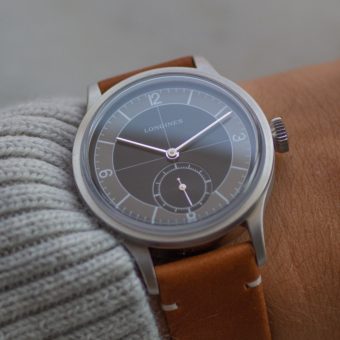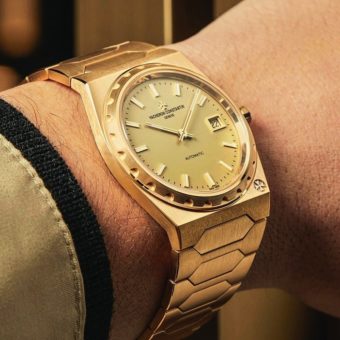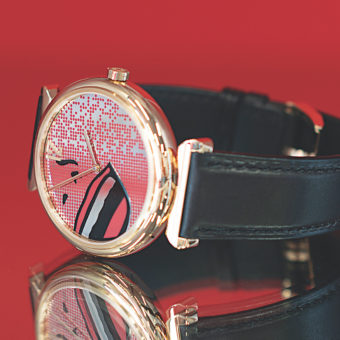The 1970s was the golden age for unorthodox sports watch designs. Details such as prominent bezels, slim case profiles made of steel, and an integrated bracelet were all the rage after Gérald Genta’s trailblazing Audemars Piguet Royal Oak debuted in 1972. Other design trendsetters of the era included the Patek Philippe Nautilus and the redesigned IWC Ingenieur SI — both designed by Genta — which popped up in 1976. Only one year later, the Vacheron Constantin 222 and Rolex OysterQuartz showed up to the scene. All of these iconic models still exist in some shape or form today (other than the OysterQuartz, which stopped production in 2002), illustrating just how much the ’70’s watch industry was defined by these watches.
Yet, the second watch released from this budding school of design — the Girard-Perregaux Laureato — has been underappreciated by many for too long. Originally released in 1975, this watch was characterized by its gold octagonal bezel, white honeycomb “Clous de Paris” dial, integrated steel bracelet with gold inserts, and a very 1970s quartz movement. The Laureato has remained in Girard-Perregaux’s collection ever since, taking on a number of changes over the years, including new complications such as chronographs and a tourbillon, to a transition from a quartz movement to a mechanical movement in 1995, even to bringing the case diameter up to 44 mm and adding rubber elements in the early 2000s with a special-edition model, the Laureato EVO 3 (picture below via Monochrome).
Then in 2016 — under the direction of newly-appointed CEO Antonio Calce — the Laureato was re-released in a 225-piece limited edition in a 41-mm case with a blue or white dial in an effort to rejuvenate the design and offer a broader appeal to consumers past the tourbillon movements the brand is known for in many of its other lines. Upon the success of this limited release, GP expanded the newly revamped collection in early 2017 by adding ceramic, skeletonized (as below), and gold watches to the lineup, but also by adding many new sizes, including 34-mm, diamond-bezel quartz pieces; a 45-mm tourbillion; a new 38-mm size with diamond, gold, or steel case options; and expanding the original 41-mm model with new material and dial color options. It was a large expansion, and one done to call back to the slim-line designs of the 1970s in a modern context and to help the brand reach consumers that have long passed it up for its competitors.
Because the collection has expanded so rapidly, we’ll be focusing primarily on the most vintage-influenced watches within the series, which are the blue- and white-dial 38- and 42-mm steel versions. These watches, aesthetically, are almost exactly alike outside of their sizing, with the only true difference coming in terms of the 42-mm version’s use of the Caliber GP01800-0008, with a 54-hour power reserve, and the 38-mm version’s Caliber GP03300-0132, with a 46-hour power reserve; both movements are automatic and are made in-house by Girard-Perregaux.
So, at either 38 or 42 mm, the watch features a thin steel case (10.02-mm and 10.88-mm, respectively, for height), a raised octagonal bezel on a circular base, a polished and brushed integrated bracelet, and a sapphire caseback showcasing the decorated movements. On the dial, the watch uses a raised outer minute track, with an inner “Clous de Paris” dial hosting on top of its applied hour markers and prominent “GP” logo at midnight. At the 3 o’clock position is a subtle date window, complemented by the raised writing towards the top and bottom of the dial, all of which is swept over by the simple sword hour and minute hands and a needle-style seconds counter. The 42-mm version with the steel bracelet (above and below) is currently priced by the brand at $11,000, while the 38-mm variation retails for $10,400.
Comparing it to the original 1975 version, it almost goes without saying that this modern watch did not set out to directly re-create it. Rather, the new model channels the general ethos of the 1970s-derived school of design. For example, the original Laureato used a combination of gold and steel materials, simple stick hands, and only a white-dial option, while this watch seems to channel some of the elements more popular from the era but not necessarily produced by GP, such as the style of hands, blue-dial option, and more prominent applied hour markers. Yet, the watch does still host many of the original elements of the design, notably the white dial, slim-line case design, and 12 o’clock GP logo.
Further, many of the elements seen on the modern version can be traced back to the later years of development within the Laureato lineage, such as the 1980s inter-link bracelet and its “H”-shaped style of links, the 1990s-style octagonal bezel and mechanical movement, and the late ‘90s, early 2000s additions of the sword hands and applied hour markers. The shape of the case is even a more recent invention, with the original watch featuring a more tonneau-style than the rounder design seen today.
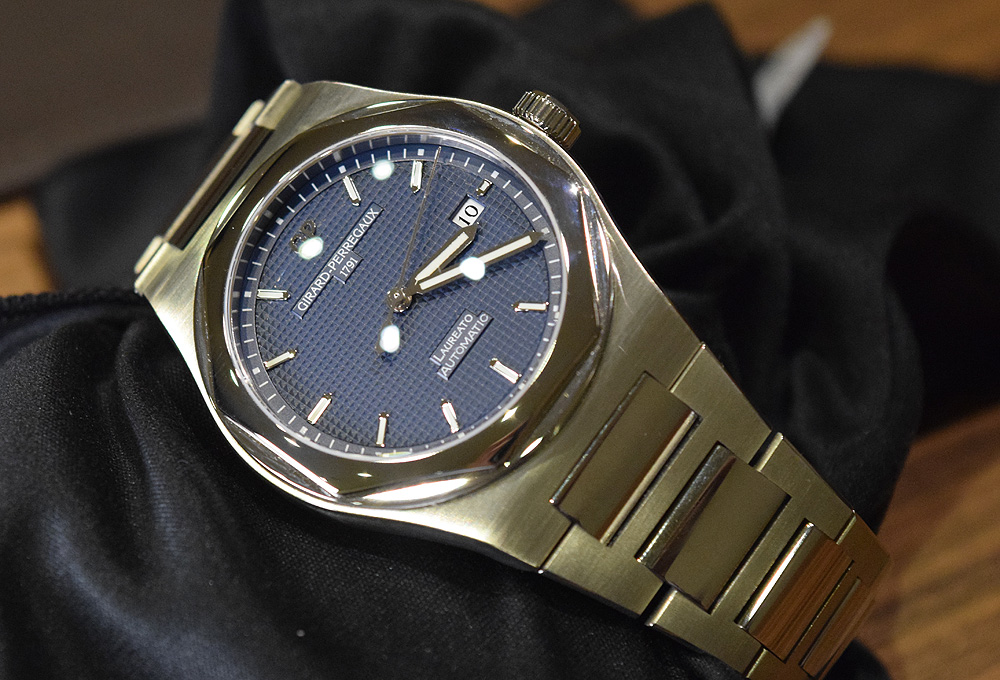
In summary, the series was meant to bring back the simplicity of the integrated design proposed in the 1970s, yet within a contemporary luxury sphere. To do so, the watch — named for the Italian version of the 1967 film The Graduate, Il Laureato — doubled down on the slim-line outline of the vintage era while bringing the series into a modern context through new material and size options. This homage is still at the collection’s core, yet it has been given a modern makeover: the expert finishing throughout, the expansion of options, the in-house mechanical movements, the dial layout, and finally a price able to compete directly with the brand’s competitors, which nowadays would include the Piaget Polo S, Vacheron Constantin Overseas, and Audemars Piguet Royal Oak. Ultimately, to keep up this momentum in what is essentially a completely new series — to maintain the large media and consumer attention the brand has garnered with the series’ rapid expansion — it would be unsurprising if we were to see even more designs under the Laureato name moving forward.
For the most recent article in the “Vintage Eye” series, in which we compare the Omega Speedmaster 60th Anniversary Edition to its historical predecessor, click here.
Caleb Anderson is a freelance writer with a primary focus on vintage watches. Since first learning about horology, he has garnered extensive knowledge in the field, and spends much of his time sharing his opinions among other writers, collectors, and dealers. Currently located near New York City, he is a persistent student in all things historical, a writer on many topics, and a casual runner.

